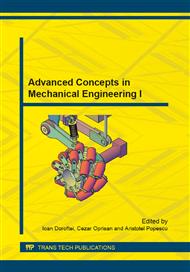p.507
p.513
p.520
p.526
p.535
p.541
p.547
p.553
p.557
Innovative Bidimensional Absolute Transducer Based on Video Detection for Positioning into Micro Assembly Processes
Abstract:
This paper explains and demonstrates a method to interconnect the video detection data flow with an innovative coded grid in order to precisely associate absolute coordinates to any scanned (micro) objects over a large area, without the aid of external bulky sensors. The concept of measuring micro-objects absolute coordinates is based on a series of coded information markings (micrometric terminal blocks) regularly and precisely printed on the bottom reference surface. In this manner the image processing could extract the values of the coded markings and precisely provide absolute coordinates for the camera image. The correspondence between the object and its absolute coordinates seems therefore straightforward. A very important challenge which must be solved is to read the information in real time, the method solving an optimization problem between the required processing speed and the maximum computing system resources. Finally it was obtained an innovative mechatronic system made of two essential sub-systems: the vision detection for micro-objects absolute reference positioning and characterization and a 3D micro-robotic translator for working space displacement. This system insured automatic scanning of micro-objects over large working spaces, detection process storing all specific information into a unique database file, which the operator can easily use to assign a set of automatic “pick-and-place” tasks for various micro assembly processes, as presented in the application example.
Info:
Periodical:
Pages:
535-540
Citation:
Online since:
October 2014
Authors:
Price:
Сopyright:
© 2014 Trans Tech Publications Ltd. All Rights Reserved
Share:
Citation:


